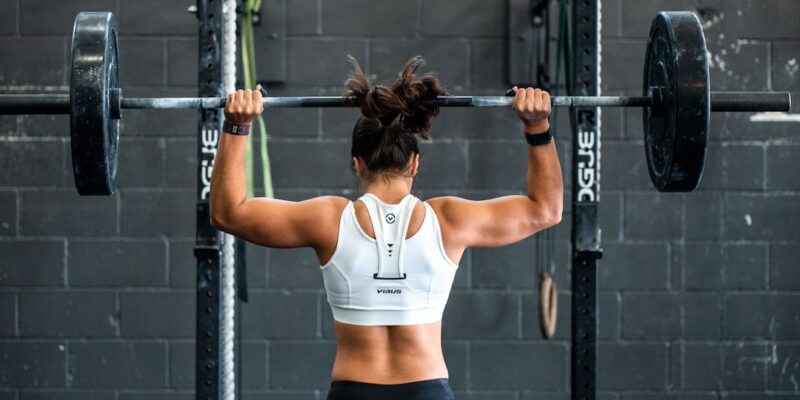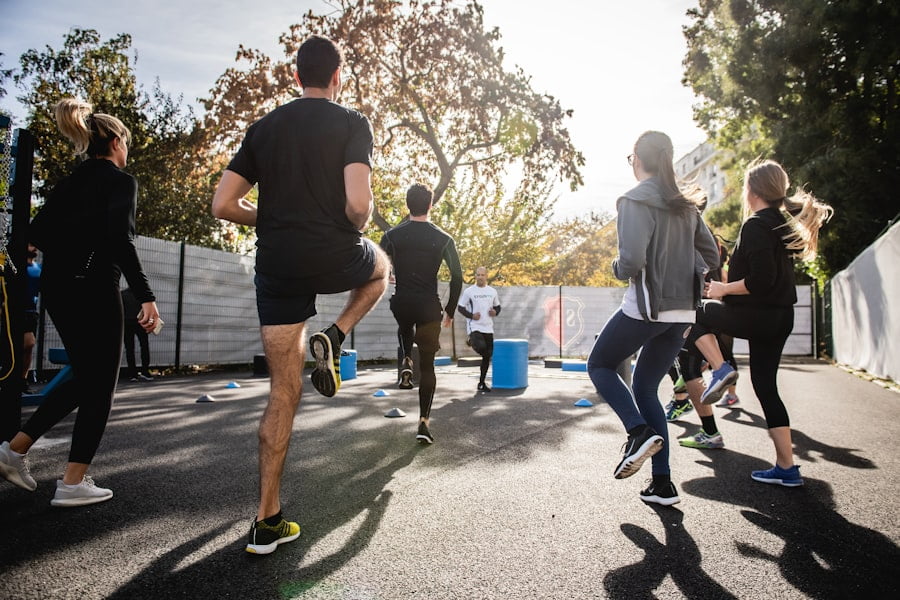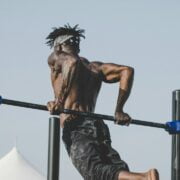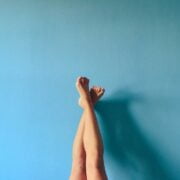
Power Up Your Lower Body: Effective Leg Workouts for Building Strength and Muscle
Leg workouts are often overlooked in favor of exercises that target the upper body, such as bench presses and bicep curls. However, neglecting leg workouts can lead to an imbalance in strength and muscle development, as well as hinder overall athletic performance. The legs are the foundation of the body and play a crucial role in supporting and stabilizing the entire body during movement.
Leg workouts are essential for building muscle mass, improving balance and stability, and increasing power and speed. Strong legs are not only important for athletes but also for everyday activities such as walking, climbing stairs, and lifting heavy objects. By incorporating leg exercises into your workout routine, you can improve your overall strength and fitness level.
In this blog post, we will explore the best leg exercises for building strength and muscle, as well as tips for maximizing your leg workouts. Whether you are a beginner or an experienced lifter, there is something for everyone to learn about leg training.
Key Takeaways
- Leg workouts are important for building strength and muscle in the lower body.
- Squats are the ultimate lower body exercise for targeting multiple muscle groups.
- Lunges are a versatile exercise that can be used to target different leg muscles.
- Deadlifts are the king of compound exercises for building lower body strength.
- Leg press is an effective alternative to squats for building leg muscles.
Squats: The Ultimate Lower Body Exercise
When it comes to leg workouts, squats are often considered the king of exercises. Squats are a compound exercise that targets multiple muscle groups in the lower body, including the quads, hamstrings, and glutes. They also engage the core muscles for stability.
Proper form is essential for maximizing the benefits of squats and avoiding injury. To perform a squat correctly, start by standing with your feet shoulder-width apart. Lower your body by bending at the hips and knees, keeping your chest up and your back straight. Go as low as you can while maintaining proper form, then push through your heels to return to the starting position.
Variations of squats, such as front squats and goblet squats, can target different muscles and add variety to your workouts. Front squats place more emphasis on the quads, while goblet squats target the glutes and hamstrings. Experiment with different squat variations to find what works best for you and your goals.
Lunges: A Versatile Exercise for Targeting Different Leg Muscles
Lunges are another effective exercise for building strength and muscle in the legs. They are a versatile exercise that can be done with or without weights and can target different muscles depending on the variation.
Walking lunges, reverse lunges, and lateral lunges are all effective for building strength and muscle in the legs. Walking lunges involve taking a step forward with one leg, lowering your body until both knees are bent at a 90-degree angle, then stepping forward with the other leg and repeating the movement. Reverse lunges involve stepping backward instead of forward, while lateral lunges involve stepping to the side.
Proper form is crucial for avoiding injury and maximizing the benefits of lunges. When performing lunges, make sure to keep your chest up, your back straight, and your knees in line with your toes. Take a long enough step so that when you lower your body, your front knee is directly above your ankle.
Deadlifts: The King of Compound Exercises for Lower Body Strength
| Deadlift Variations | Muscles Worked | Benefits |
|---|---|---|
| Conventional Deadlift | Glutes, Hamstrings, Quads, Lower Back, Core | Increases overall strength, improves posture, enhances grip strength |
| Sumo Deadlift | Glutes, Hamstrings, Quads, Lower Back, Core | Reduces stress on lower back, targets inner thighs, improves hip mobility |
| Romanian Deadlift | Hamstrings, Glutes, Lower Back | Improves hamstring flexibility, strengthens lower back, enhances hip hinge movement |
| Trap Bar Deadlift | Glutes, Hamstrings, Quads, Lower Back, Core | Reduces stress on lower back, targets quads, improves grip strength |
Deadlifts are often referred to as the king of compound exercises for lower body strength. They target multiple muscle groups in the lower body, including the hamstrings, glutes, and lower back. Deadlifts also engage the core muscles for stability.
Proper form is essential for avoiding injury and maximizing the benefits of deadlifts. To perform a deadlift correctly, start by standing with your feet shoulder-width apart and a barbell on the floor in front of you. Bend at the hips and knees to lower your body and grip the barbell with an overhand grip. Keep your chest up and your back straight as you push through your heels to lift the barbell off the floor. Stand up straight, then lower the barbell back to the floor with control.
Variations of deadlifts, such as sumo deadlifts and Romanian deadlifts, can target different muscles and add variety to your workouts. Sumo deadlifts involve taking a wider stance and gripping the barbell with a wider grip, which places more emphasis on the inner thighs and glutes. Romanian deadlifts involve keeping your legs straighter and hinging at the hips, which places more emphasis on the hamstrings.
Leg Press: An Effective Alternative to Squats for Building Leg Muscles
The leg press is a machine that targets the quads, hamstrings, and glutes. It can be an effective alternative to squats for those who have difficulty with proper squat form or have injuries that prevent them from doing squats.
Proper form is still essential for avoiding injury and maximizing the benefits of the leg press. To perform a leg press correctly, start by sitting in the machine with your feet shoulder-width apart on the footplate. Push through your heels to extend your legs and lift the weight, then lower it back down with control.
While the leg press can be a valuable addition to your leg workout routine, it should not replace squats entirely. Squats are a functional movement that engages multiple muscle groups and requires core stability. Incorporate both squats and leg presses into your routine to maximize your leg strength and muscle development.
Calf Raises: Strengthening the Lower Legs for Better Balance and Stability

Calf raises are an often overlooked exercise but are crucial for strengthening the lower legs and improving balance and stability. The calves play a significant role in everyday activities such as walking, running, and jumping.
Calf raises can be done with or without weights and can be performed in various positions, such as standing or seated. To perform a standing calf raise, start by standing with your feet shoulder-width apart. Push through the balls of your feet to raise your heels off the ground as high as you can, then lower them back down with control. To add resistance, hold dumbbells or a barbell across your shoulders.
Variations of calf raises, such as seated calf raises and single-leg calf raises, can add variety to your workouts and target different muscles. Seated calf raises involve sitting on a bench or machine with your knees bent and your feet on a platform. Push through the balls of your feet to raise your heels off the ground, then lower them back down with control. Single-leg calf raises involve performing the exercise on one leg at a time, which increases the challenge and targets each calf individually.
Proper form is crucial for avoiding injury and maximizing the benefits of calf raises. When performing calf raises, make sure to keep your core engaged, your back straight, and your knees slightly bent. Focus on squeezing the calves at the top of the movement for maximum muscle activation.
Glute Bridges: Building Strong Glutes for Improved Athletic Performance
The glutes are one of the largest muscle groups in the body and play a crucial role in athletic performance. Strong glutes are important for activities such as running, jumping, and squatting.
Glute bridges are an effective exercise for building strong glutes. To perform a glute bridge, start by lying on your back with your knees bent and your feet flat on the ground. Push through your heels to lift your hips off the ground until your body forms a straight line from your knees to your shoulders. Squeeze your glutes at the top of the movement, then lower your hips back down with control.
Variations of glute bridges, such as single-leg glute bridges and hip thrusts, can target different muscles and add variety to your workouts. Single-leg glute bridges involve performing the exercise on one leg at a time, which increases the challenge and targets each glute individually. Hip thrusts involve using a bench or step to elevate your upper back and shoulders, which increases the range of motion and places more emphasis on the glutes.
Proper form is essential for avoiding injury and maximizing the benefits of glute bridges. When performing glute bridges, make sure to keep your core engaged, your back straight, and your knees in line with your toes. Focus on squeezing the glutes at the top of the movement for maximum muscle activation.
Plyometric Exercises: Explosive Movements for Building Power and Speed
Plyometric exercises are explosive movements that can build power and speed in the legs. They involve jumping or hopping movements that require a quick stretch-shortening cycle of the muscles.
Plyometric exercises, such as jump squats and box jumps, can be incorporated into your leg workout routine to add variety and intensity. Jump squats involve performing a squat, then exploding off the ground into a jump. Box jumps involve jumping onto a box or platform, then stepping or jumping back down.
Proper form and progression are crucial for avoiding injury and maximizing the benefits of plyometric exercises. Start with low-impact variations, such as squat jumps or step-ups, before progressing to higher-impact exercises like jump squats and box jumps. Focus on landing softly and absorbing the impact with your muscles rather than your joints.
Plyometric exercises should be incorporated into a well-rounded leg workout program that includes strength training exercises as well. By combining strength training with plyometrics, you can build both strength and power in your legs for improved athletic performance.
Resistance Band Workouts: Adding Variety and Intensity to Your Leg Workouts
Resistance bands are a versatile tool that can be used to add variety and intensity to your leg workouts. They provide constant tension throughout the entire range of motion, which can help activate and strengthen the muscles.
Resistance band exercises, such as lateral band walks and banded squats, can target different muscles and add variety to your workouts. Lateral band walks involve placing a resistance band around your ankles and taking small steps to the side, keeping tension on the band. Banded squats involve placing a resistance band around your thighs, just above your knees, and performing squats with the band providing resistance.
Proper form and progression are crucial for avoiding injury and maximizing the benefits of resistance band workouts. Start with lighter resistance bands and gradually increase the tension as you get stronger. Focus on maintaining proper form and control throughout the exercises, even with the added resistance.
Resistance bands can be a valuable addition to your leg workout routine, whether you are a beginner or an experienced lifter. They can help activate and strengthen the muscles in different ways than traditional weightlifting exercises, providing a new challenge for your muscles.
Tips for Maximizing Your Leg Workouts: Proper Form, Reps, and Sets for Optimal Results
To maximize the benefits of your leg workouts, there are a few key tips to keep in mind:
1. Proper form is essential for avoiding injury and maximizing the benefits of leg exercises. Take the time to learn proper form for each exercise and focus on maintaining it throughout your workouts.
2. Reps and sets should be tailored to your fitness level and goals. Beginners may start with higher reps (10-15) and fewer sets (2-3), while more advanced lifters may do lower reps (6-8) and more sets (4-5). Experiment with different rep ranges and set schemes to find what works best for you.
3. Rest and recovery are crucial for allowing the muscles to repair and grow. Make sure to give yourself enough rest between sets and between workouts to allow for proper recovery.
4. Incorporating a variety of exercises and progressive overload can help prevent plateaus and maximize results. Try different exercises and variations to target different muscles and keep your workouts challenging. Gradually increase the weight or resistance over time to continue making progress.
By following these tips and incorporating a well-rounded leg workout routine into your fitness regimen, you can build strength and muscle in your legs, improve balance and stability, and increase power and speed. Remember to listen to your body and adjust your workouts as needed to avoid injury and achieve optimal results.
FAQs
What are the benefits of leg workouts?
Leg workouts can help build strength and muscle in the legs, improve balance and stability, increase endurance, and boost overall athletic performance.
What are some effective leg exercises for building strength and muscle?
Some effective leg exercises for building strength and muscle include squats, lunges, deadlifts, leg press, calf raises, and hamstring curls.
How often should I do leg workouts?
It is recommended to do leg workouts at least twice a week, with at least one day of rest in between to allow for muscle recovery.
What should I eat before and after leg workouts?
Before leg workouts, it is recommended to eat a meal that is high in carbohydrates and protein to provide energy and fuel for the workout. After leg workouts, it is recommended to eat a meal that is high in protein to help repair and rebuild muscle tissue.
What are some common mistakes to avoid during leg workouts?
Some common mistakes to avoid during leg workouts include using improper form, lifting too heavy weights, neglecting to warm up and cool down properly, and not allowing enough time for muscle recovery.

















